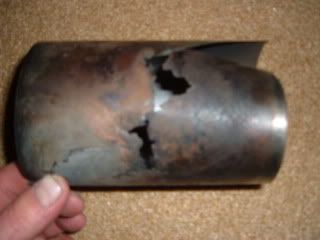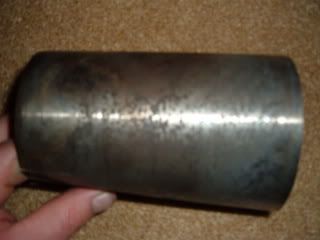how is a pressure test done.
Moderator: phpBB2 - Administrators
how is a pressure test done.
Just out of interest how is a pressure test done.
Do they bolt anything to the block. or is it all clamped.
I think some of you can work out where I'm going.
Do they bolt anything to the block. or is it all clamped.
I think some of you can work out where I'm going.
Current V8 car TVR 400SE 240 BHP
Current Project TVR Tasmin Race, with 3.9 running at 230 BHP
Currently building a 4.6 300 BHP Xbolted Engine for it. Solid Lifters and Group A rockers, Stange 4 heads, Pocketed piston, fully balanced.
Current Project TVR Tasmin Race, with 3.9 running at 230 BHP
Currently building a 4.6 300 BHP Xbolted Engine for it. Solid Lifters and Group A rockers, Stange 4 heads, Pocketed piston, fully balanced.
You would have to bolt plates to the top of the block to seal it - and likewise a plate to the front and then pressurise.
You cant clamp it down on a plate like a head or an inline 4 becasue of the head angles
Makes you wonder in your case if some numpty used metric bolts - be good to go along and see if an M10/12 now fits in the treads for the UNC's
Cheers
Andrew
You cant clamp it down on a plate like a head or an inline 4 becasue of the head angles
Makes you wonder in your case if some numpty used metric bolts - be good to go along and see if an M10/12 now fits in the treads for the UNC's
Cheers
Andrew
-
softdash3.9
- Forum Contributor

- Posts: 310
- Joined: Sun Nov 19, 2006 9:42 am
- Location: Near Darlington
Just be aware following  hope the info helps
hope the info helps
Blanking plates are used with a pressure gauge (accurate one)
Find out what pressure they intend to use
My local engine builder who is very good pressurises to 50psi, just hold that thought
I had a porous block - suspected, (did actually) but wanted confirmation before fitting top hats, my usual engine builder was unable to fit top hat liners, so used another reputable company local to me.
They pressurised the block to 120psi, pressure would decay to 80psi over night, but were unable to identify the source of the leak. But would hold 80psi OK no decay
Did this several times, no source located, I took over a large bath to enable the pressurised block to be submerged in water, again tested several times, immersed, no visible leaks seen, pressure dropped to 80psi
As the engine was now covered in soap, etc, they pressurised the block and then put it in the hot wash as a last resort!:shock: one of the lads opened the door to put some additional components in, and noticed some bubbles around No 3 liner (the suspected liner!!!)
On confirmation, I had top hat liners fitted, and had some issues, but thats another story, on the forum!!
If I had a pressure test done by my 1st company, they would have told me it was OK --- and they would have been WRONG
Been there and done it the HARD way
Hope the info helps
Blanking plates are used with a pressure gauge (accurate one)
Find out what pressure they intend to use
My local engine builder who is very good pressurises to 50psi, just hold that thought
I had a porous block - suspected, (did actually) but wanted confirmation before fitting top hats, my usual engine builder was unable to fit top hat liners, so used another reputable company local to me.
They pressurised the block to 120psi, pressure would decay to 80psi over night, but were unable to identify the source of the leak. But would hold 80psi OK no decay
Did this several times, no source located, I took over a large bath to enable the pressurised block to be submerged in water, again tested several times, immersed, no visible leaks seen, pressure dropped to 80psi
As the engine was now covered in soap, etc, they pressurised the block and then put it in the hot wash as a last resort!:shock: one of the lads opened the door to put some additional components in, and noticed some bubbles around No 3 liner (the suspected liner!!!)
On confirmation, I had top hat liners fitted, and had some issues, but thats another story, on the forum!!
If I had a pressure test done by my 1st company, they would have told me it was OK --- and they would have been WRONG
Been there and done it the HARD way
Hope the info helps
Regards
Royston

Royston

a pressure test done properly is not dangerous, you do it Hydrolically ie. with absolutly no air in the system, that way if it lets go there is no head of pressure to push anything in any direction. I've seen a boiler done to 250 PSI that had a leak, little dribble from a pipejoint (and you use boiled water!!)
Mike
Mike
poppet valves rule!
I agree, using liquid is fine, using air could be dangerous.kiwicar wrote:a pressure test done properly is not dangerous, you do it Hydrolically ie. with absolutly no air in the system, that way if it lets go there is no head of pressure to push anything in any direction. I've seen a boiler done to 250 PSI that had a leak, little dribble from a pipejoint (and you use boiled water!!)
Mike
Pete
So if they had to bolt a plate to the head, they should have noticed at that point the threads was no good. as the 1st thing they did was a presure test. unless they dammaged the threads when they did this.Darkspeed wrote:You would have to bolt plates to the top of the block to seal it - and likewise a plate to the front and then pressurise.
You cant clamp it down on a plate like a head or an inline 4 becasue of the head angles
Makes you wonder in your case if some numpty used metric bolts - be good to go along and see if an M10/12 now fits in the treads for the UNC's
Cheers
Andrew
Current V8 car TVR 400SE 240 BHP
Current Project TVR Tasmin Race, with 3.9 running at 230 BHP
Currently building a 4.6 300 BHP Xbolted Engine for it. Solid Lifters and Group A rockers, Stange 4 heads, Pocketed piston, fully balanced.
Current Project TVR Tasmin Race, with 3.9 running at 230 BHP
Currently building a 4.6 300 BHP Xbolted Engine for it. Solid Lifters and Group A rockers, Stange 4 heads, Pocketed piston, fully balanced.
As said I would not let them do anthing else as don't trust them. also not going to pay them £235 to fit them. seeing as they are bunch of muppets.kiwicar wrote:thinking about it I would check they have helicoiled the block for the right threads, because if they haven't you are looking at a custom set of head studs.
Mike
If there are metric there will be trouble.
Also I know a few was good, because a made a piston stop to remove the crank pulley.
Current V8 car TVR 400SE 240 BHP
Current Project TVR Tasmin Race, with 3.9 running at 230 BHP
Currently building a 4.6 300 BHP Xbolted Engine for it. Solid Lifters and Group A rockers, Stange 4 heads, Pocketed piston, fully balanced.
Current Project TVR Tasmin Race, with 3.9 running at 230 BHP
Currently building a 4.6 300 BHP Xbolted Engine for it. Solid Lifters and Group A rockers, Stange 4 heads, Pocketed piston, fully balanced.
-
softdash3.9
- Forum Contributor

- Posts: 310
- Joined: Sun Nov 19, 2006 9:42 am
- Location: Near Darlington






